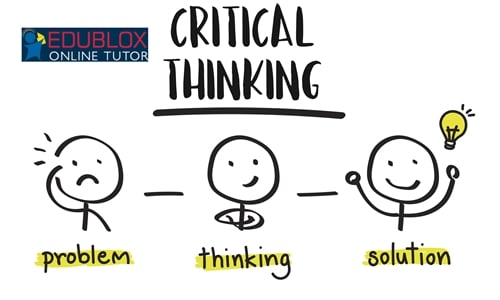Business Strategy
 Business Strategy
Business Strategy
Currently, the modern business environment is more competitive than ever, and this is because numerous business outfits have emerged to compete for roughly the same market. Therefore, successful companies are those that devise means which give them a competitive edge over their rivals. One such measure entails the adoption of a practical business strategy. The term business strategy is a workable plan that a business entity uses to compete favorably with other organizations, improve financial performance, achieve organizational goals, and attract new customers. An effective strategy is one that plots a clear guideline on actions that people are encouraged (not) to take for the betterment of the company, thus ensuring that no vital aspect of the business is left to chance.
Are you studying with a busy schedule? Drop your assignments here. Our able team will provide personalized, quality, and plagiarism free answers.
In this digital era, innovations like the internet have driven companies towards globalization, raising the stakes, and making it imperative for companies to adopt effective strategies. Regarding the analysis of business organizations’ strategies, few are as insightful as Team Wikispeed’s case. This paper proceeds on the thesis that Team Wikispeed’s case is a testament to the fact that companies must incorporate novel ideas into their operations if they are to succeed in the business scene.
Embracing Agile
In the quest to assess Wikispeed’s strategy and performance, it is vital to create the proper context in which this discourse shall occur. No article gives more insight into the intricacies of crafting effective business strategies and embracing creativity than Embracing Agile. In this piece, the authors highlight the revolutionary impact of innovation and place a particular focus on the information technology sector to derive lessons that any business entity can adopt (Rigby et al., 2016). They note that innovative Agile methods have radically altered the IT landscape for the last thirty years in software development, quality improvement, and market speed, as well as enhancing the IT teams’ drive and productivity. Rigby et al. (2016) conceptualize Agile’s methodologies as welcome reprieves from the conventional command-and-control model of management. The approach embodies a whole set of new values and practices that yield immense benefits to people working in the organization. According to the authors, Agile’s proposal has gained widespread acceptance in other business spheres owing to its universally applicable principles.
The authors pinpoint innovation as the fundamental aspect of Agile’s approach (Rigby et al., 2016). According to the authors, this creative approach works for most companies because the business environment is more dynamic than ever, necessitating the formulation of plans to enable business entities to keep up with the rapidly changing market conditions. The biggest challenge, however, is that most executives purport to implement the novel strategy, yet they are reluctant to let go of outdated methods. For instance, many CEOs launch too many programs and set strict deadlines for employees, yet the company would fare much better if only a few projects were prioritized. They also tend to overturn the decisions that teams make by intervening midway and re-introducing concepts that had been ruled out.
Are you studying with a busy schedule? Drop your assignments here. Our able team will provide personalized, quality, and plagiarism free answers.
As a remedy to the challenges that entities face in implementing the Agile approach, the authors make six recommendations (Rigby et al., 2016). First, leaders must familiarize themselves with the new method if they are to provide effective leadership. The second facet entails appreciating situations where the strategy would work, and those where attempts at implementing it will constitute wasted effort. The third recommendation is that entities should resist the urge to change everything at once and instead introduce new methodologies progressively. The fourth step for success in a dynamic business environment is to allow for flexibility so that proficient teams can customize processes. At the fifth stage, entities should implement innovative strategies like agile in high-ranking functions within the company in situations where the mundane routine aspects of company operations are static, leading to corporate realignments in their organizations. The last step entails removing all the possible hurdles to the implementation of novel and creative interventions. The researchers discovered that bureaucracy is the main frustrating factor for creativity because innovations are subjected to long approval sequences. To remedy this shortcoming, Rigby et al. (2016) recommend inquisitorial leadership where executives ask questions on the viability of innovations rather than clamping down on innovative ideas using the conventional command-and-control model.
The Wikispeed Approach and its Difference from Traditional Product Development Processes
The case study on Team Wikispeed provides a radically unique perspective on product development approaches (Kupp et al., 2013). Team Wikispeed embraced the Agile model, and from the details provided by its founder Joe Justice, the development process that the team uses is markedly different from conventional practice. Where others use the standard Waterfall model, Wikispeed uses Scrum, which embodies agile principles. In Agile methodologies, the development process allows for iteration, which is the repetition of sequences until one achieves the desired outcome. On the other hand, the Waterfall sequence entails the input of immense efforts and resources into a predetermined path from the beginning and pursuing that plan until it is complete.
Another difference that exists between these two processes pits flexibility against rigidity (Kupp et al., 2013). The agile approach is akin to an inquisitorial process where the parties try different things until the product’s specifications are deemed appropriate. The advantage of this approach is that it allows for alteration of the design in case the product’s requirements, in this case, a car, change. In the Waterfall model, however, the specifications are fixed, and the product design finalized even before the process takes off. As such, there is no space for making changes when circumstances change midway through the process. The inadaptability of the Waterfall method makes production a costly affair, especially where sales dwindle, customer preferences change, or the industry makes discoveries that render previous designs and materials obsolete.
Are you studying with a busy schedule? Drop your assignments here. Our able team will provide personalized, quality, and plagiarism free answers.
The line of production’s organization is another distinguishing factor between Team Wikispeed’s production process and other conventional approaches (Kupp et al., 2013). Wikispeed embraces a collaborative structure under Scrum to ensure that responsibility is distributed evenly across the team. The organization around production takes a tri-faceted approach with the product owner, team members, and the scrum master bearing different roles. On the contrary, conventional productions take a command-and-control model where team members are accountable to the manager.
Elements of the Wikispeed Approach Applicable to Traditional manufacturing Firms
A critical factor in the successful implementation of Agile is knowing where it can work and the aspects that can or cannot work in a given scenario (Kupp et al., 2013). Traditional manufacturing firms do not have the opportunity to try out novel ideas like iteration because their fields are not dynamic. However, there are vital lessons that they can borrow from Wikispeed’s approach. A significant transgression that multinationals have been guilty of in reverse engineering is planning on market segments using existing products (Winter & Govindarajan, 2015). Such a strategy manifests in removing existing features and leaving a lower quality product to serve less affluent markets. The main lesson from Team Wikispeed’s case study is the necessity of shifting accountability of the business from the manager to the customer (Kupp et al., 2013). Managers tend to be out of touch with the market, and while they may provide strategic leadership, the basis of manufacturing should satisfy the consumer’s needs.
Another positive practice embraced by Wikispeed is the distribution of responsibility across the entire team and allowing teams that have attained expertise in their fields to improvise where necessary to create practical solutions (Kupp et al., 2013). Traditional manufacturers should remove rigidity where strict adherence to specific processes have no functional impact on products and embrace new ideas. In trying to come up with new products, executives should conceptualize the problem objectively without having an immediate solution (Winter & Govindarajan, 2015). Taking such an approach will remove the inconveniences caused by managers exercising their executive authority to interfere with the teams.
In conclusion, business strategy is a necessary facet of organizational operation as it determines its success or failure. Team Wikispeed’s approach demonstrates the importance of having a flexible and customer-centered plan. Even where the entities involved are traditional manufacturing companies, there are a few lessons that can be borrowed from Agile to improve efficiency.
References
Kupp, M., Dahlander, L., & Morrow, E. (2013, November 8). Team Wikispeed: Developing Hardware the Software Way. HBR Store. https://store.hbr.org/product/team-wikispeed-developing-hardware-the-software-way/ES1391
Rigby, D. K., Sutherland, J., & Takeuchi, H. (2016, May 1). Embracing Agile. Harvard Business Review, May 2016. https://hbr.org/2016/05/embracing-agile
Winter, A., & Govindarajan, V. (2015, July 1). Engineering Reverse Innovations. Harvard Business Review, July–August 2015. https://hbr.org/2015/07/engineering-reverse-innovations

 Business Strategy
Business Strategy Cancer Awareness
Cancer Awareness During human development, several milestones occur from childhood to adulthood. The milestones are marked by the cognitive, physical, and social, emotional growth processes, which are essential stages in an individual’s life. Various theorists such as Piaget and Erik Erickson came up with theories to describe the human developmental processes. By focusing on the biography of
During human development, several milestones occur from childhood to adulthood. The milestones are marked by the cognitive, physical, and social, emotional growth processes, which are essential stages in an individual’s life. Various theorists such as Piaget and Erik Erickson came up with theories to describe the human developmental processes. By focusing on the biography of  Using one of the lessons you developed in this course, create both content and critical thinking questions you could ask during the implementation of the lesson. The questions should be based on the standards and objectives within the lesson you selected.
Using one of the lessons you developed in this course, create both content and critical thinking questions you could ask during the implementation of the lesson. The questions should be based on the standards and objectives within the lesson you selected.